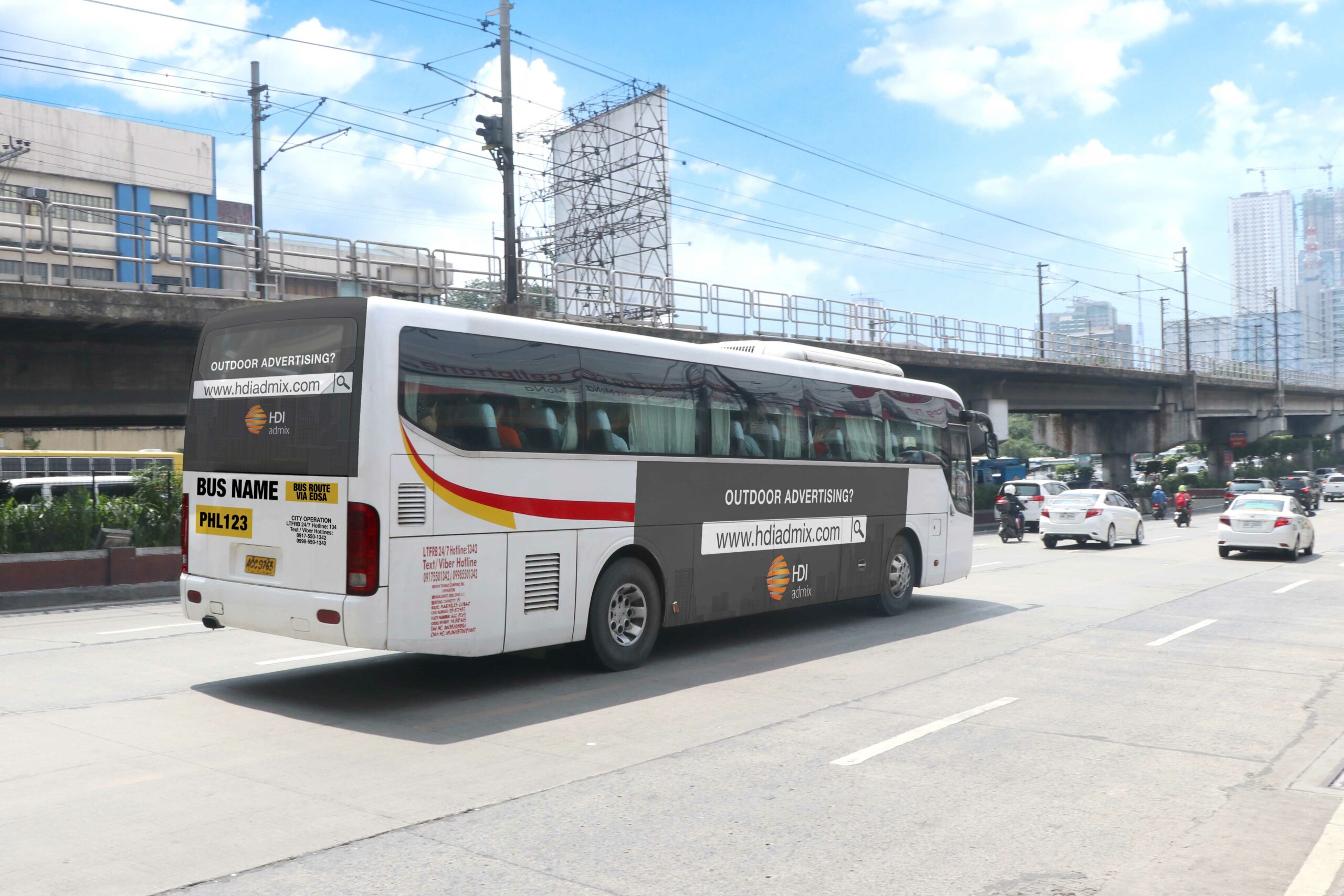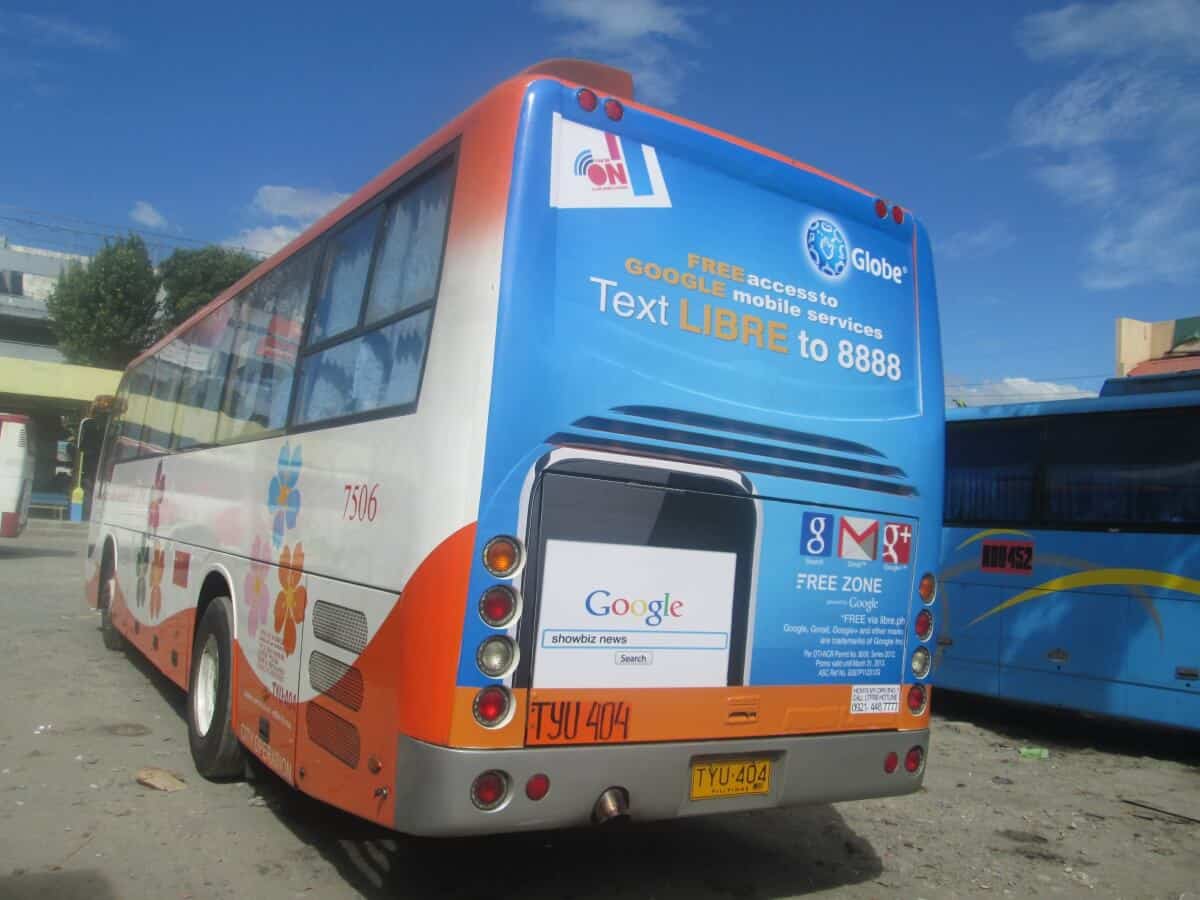Inexpensive Transit Advertising Philippines for Brand Name Awareness
Wiki Article
How Transportation Marketing Can Transform Public Transport Spaces Into Dynamic Advertising And Marketing Platforms
Transportation marketing holds substantial potential to redefine public transport spaces right into dynamic advertising systems that educate and engage. By making use of cutting-edge formats such as electronic display screens and interactive booths, brands can not just reach a varied target market but additionally improve the overall commuter experience. This technique produces a distinct possibility for brand names to link with consumers in a setting that is frequently ignored. As we discover the multifaceted benefits and progressing techniques of transit advertising and marketing, it elevates the question of exactly how this makeover can redefine our communications with both brands and the metropolitan setting.Benefits of Transit Advertising And Marketing

In addition, transit advertising is very affordable contrasted to standard media. It allows marketers to achieve high impacts at lower prices, making best use of return on financial investment. The captive target market of commuters supplies an opportunity for brand names to convey their messages to people who are commonly receptive throughout their traveling times.
Moreover, the vibrant nature of transit advertising and marketing allows projects to be updated often, guaranteeing that messaging stays appropriate and timely. This flexibility can be crucial in replying to market trends or marketing events, keeping the brand name top-of-mind for consumers. Finally, the prevalent presence of transportation advertising adds to brand name recall; duplicated exposure within familiar traveling contexts enhances brand name awareness and promotes customer commitment, ultimately driving sales and improving brand name reputation.
Sorts Of Transit Advertising And Marketing
Public transportation systems offer different layouts for advertising and marketing, each providing to different marketing techniques and audience interaction techniques. One famous kind is exterior bus and train wraps, which cover the entire car and produce a mobile billboard impact, enabling for high exposure in metropolitan atmospheres. These wraps can capture interest as they go across active roads, getting to a varied target market.Another popular format is indoor advertising and marketing, that includes posters, digital screens, and advertisements on transportation seats. These placements engage guests during their journey, strengthening brand messaging in a constrained room. Digital shows, specifically, offer the benefit of dynamic web content, making it possible for advertisers to update messages in real-time.
Terminal marketing is also substantial, featuring posters, banners, and interactive kiosks within transportation stations. These advertisements leverage foot traffic and can target certain demographics based on area.
Finally, promotional collaborations with transit authorities can lead to special campaigns, such as themed transportation experiences or occasions, improving the total interaction with travelers. Each kind of transportation marketing offers unique advantages, enabling brand names to customize their method to properly reach their target audience within the general public transportation ecological community.
Engaging Travelers Effectively
Travelers are increasingly swamped with marketing messages throughout their day-to-day journeys, making it vital for brand names to involve them in ingenious methods. To capture attention in this congested area, advertisers have to prioritize creative thinking and importance. Making use of attractive visuals and succinct messaging can considerably boost the likelihood of interaction.Interactive components, such as QR codes or increased reality functions, can likewise change fixed ads into immersive experiences, cultivating a much deeper connection with the audience. Brands ought Find Out More to concentrate on resolving travelers' rate of interests and requirements, customizing messages to reverberate with their way of living, whether via promotions for local companies or services developed to improve their commuting experience.
Additionally, timing plays a critical duty; purposefully positioning advertisements throughout height travelling hours can maximize presence and influence. Engaging commuters effectively also includes leveraging social networks combination, allowing passengers to share their promos or experiences straight from transportation platforms, therefore magnifying brand name reach.
Basically, reliable involvement depends upon recognizing the commuter trip and developing compelling, interactive, and relevant advertising and marketing experiences that not just capture interest yet also drive action and commitment. By doing so, brand names can transform public transport into a dynamic marketing platform that reverberates with its target market.

Measuring Advertising Effect
Just how can brands properly examine the effectiveness of their marketing projects in transportation settings? Measuring the impact of transit advertising and marketing needs a multifaceted technique that incorporates qualitative and measurable metrics. One common technique is tracking interaction through mobile analytics, where brand names can examine foot traffic patterns and app communications previously, throughout, and after projects.Surveys can offer valuable understandings right into brand recall and consumer belief, allowing brands to gauge just how well their messages reverberate with commuters. In addition, checking social media sites engagement relevant to specific campaigns can reveal shifts in public perception and brand conversation.

Moreover, teaming up with transit companies can boost dimension precision, as they frequently have thorough group data on ridership trends. By integrating these methods, brand names can create a comprehensive understanding of their marketing efficiency, making sure that their projects not just get to but also affect their target audiences successfully.
Future Fads in Transportation Advertising
A substantial change is anticipated en more route advertising and marketing as technological advancements and altering consumer behaviors improve the landscape. Transit Advertising Philippines. The integration of digital displays and interactive media is anticipated to enhance engagement, enabling brand names to supply vibrant web content that reverberates with varied target markets. As mass transit systems embrace clever modern technology, marketers will leverage real-time data analytics to tailor messages based upon passenger demographics and habitsIn addition, augmented truth (AR) is positioned to transform the means travelers interact with advertisements. By providing immersive experiences, AR can transform an ordinary trip right into an interesting narrative that captures focus and promotes brand commitment. This technology will likely urge marketers to create even more experiential campaigns that drive customer interaction.
Sustainability is an additional critical pattern affecting transit advertising and marketing. As ecological awareness expands, brands will increasingly seek to align with eco-friendly methods, using lasting materials and advertising green campaigns within their projects.
Conclusion
In final thought, transit marketing offers considerable advantages by improving brand exposure and engaging a restricted target market. As patterns progress, the potential for ingenious communications between brands and commuters is positioned to expand, ensuring that transit advertising stays an essential element of modern advertising and marketing strategies.Transportation advertising and marketing holds substantial possibility to redefine public transportation rooms into lively marketing systems that inform and engage. The pervasive visibility of transit advertising adds to brand recall; duplicated direct exposure within acquainted travel contexts reinforces brand recognition and promotes customer loyalty, eventually driving sales and enhancing brand name reputation.
Exactly how can brands precisely evaluate the performance of their advertising and marketing campaigns in transit settings?In final thought, transit advertising and marketing uses significant benefits by improving brand name presence and engaging a restricted audience. Transit Advertising Philippines. As fads develop, the potential for ingenious interactions in between commuters and brand names is poised to expand, guaranteeing that transportation advertising and marketing stays a vital part of modern advertising and marketing Get More Information techniques
Report this wiki page